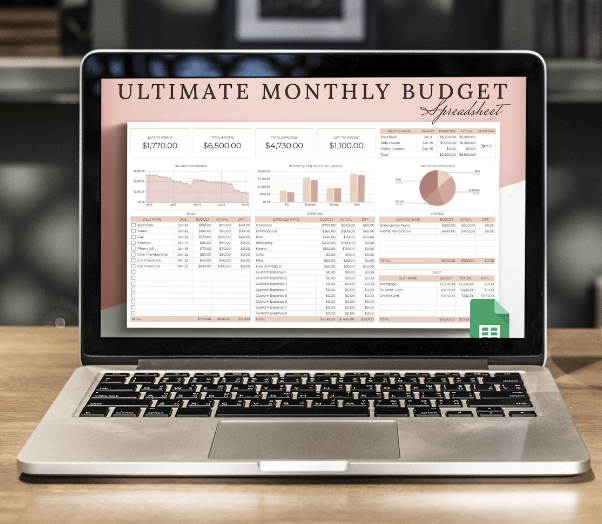Tracking your financial activity may seem like a hassle, but it is necessary in order to build and maintain good financial health. If you don’t know what you are spending, how can you plan for the future or ensure you stay free of debt? Luckily for all of us, there are only 6 steps to the process of creating a budget. Once you have defined parameters of how much you can spend, the focus shifts to adhering to your budget on a day-to-day basis.
Note: You can go as in-depth to create an Excel spreadsheet, or you can keep a notebook of paper with an outlined budget. The trick is to figure out a way to track your finances that works for you. The following steps can help.
Step 1: Note your net income
After taxes are taken out of your paycheck, what is leftover? That is your net income. This needs to be noted for the entire month for you to accurately analyze how much money you can work with or spend.
Step 2: Track your spending
Either in a spreadsheet, through Quickbooks, or in a notebook, keep track of your daily spending. It can be helpful to track and categorize your purchases so you know where you can make adjustments. Doing so will help you identify what you are spending the most money on, and where it might be easiest to cut back.
Start by listing all of your fixed expenses. These are regular monthly bills, such as rent, a car payment, or insurance. It is unlikely you will be able to cut back on these, but knowing how much of your monthly income they take up can be helpful.
Next, list all your variable expenses. These are the expenses that may change from month to month, such as groceries, gas, and entertainment. You might find opportunities in these categories to cut spending so you can save money. If you’re not sure where to look, start reviewing bank and credit card statements.
Step 3: Outline your goals
The first thing is first: make a list of all the financial goals you want to accomplish in the short-and-long-term. Short-term goals should take no more than a year to achieve. Long-term goals, such as saving for retirement or your child’s college education, may take years to reach. Your goals don’t have to be set in stone but identifying your priorities before you start planning a budget will help. Example: “Reduce credit card debt by $5,000”.

Step 4: Make a plan
Using the variable and fixed expenses, determine your current monthly expenses. Then, review your statements to see if there are any unknown or forgotten charges, like Adobe software or a monthly music subscription.
Next, subtract your monthly expenses from your net income. Is there a surplus or deficit? If you are over budget, it’s time to figure out what costs can be cut. Re-consider the variable expenses that are eating up your budget, and make some hard choices to assess what you can live without for a while, or what “habits” (like eating out) can become splurges.
Step 5: Adjust your habits, if necessary
Practice makes perfect. You are the only one who can take the necessary steps to keep your financial goals on track. If you slip up and over-spend, it’s okay. The goal is to be aware of your daily and monthly purchases so you can adjust your habits, as necessary.
Maybe you can cut spending by having a movie night at home and not at the movie theatre. Perhaps you can spend less on delivered, prepared meals and can start cooking the bulk of your meals at home. You may need to learn how to cook, but that’s a helpful skill that will help keep your budget on track.
If the numbers still don’t add up, you can look at adjusting your fixed expenses. Doing so will be much more difficult and will require greater discipline. On close inspect a “need” may just be a “hard to part with.” Weigh your options carefully.
Step 6: Keep checking in
It is important that you review your budget on a regular basis to be sure you are staying on track. You can also compare your monthly expenses to those of people similar to you. When you get a raise, your budget will change. When life surprises you with a bill, additional tweaks may need to be made. You can do it!







